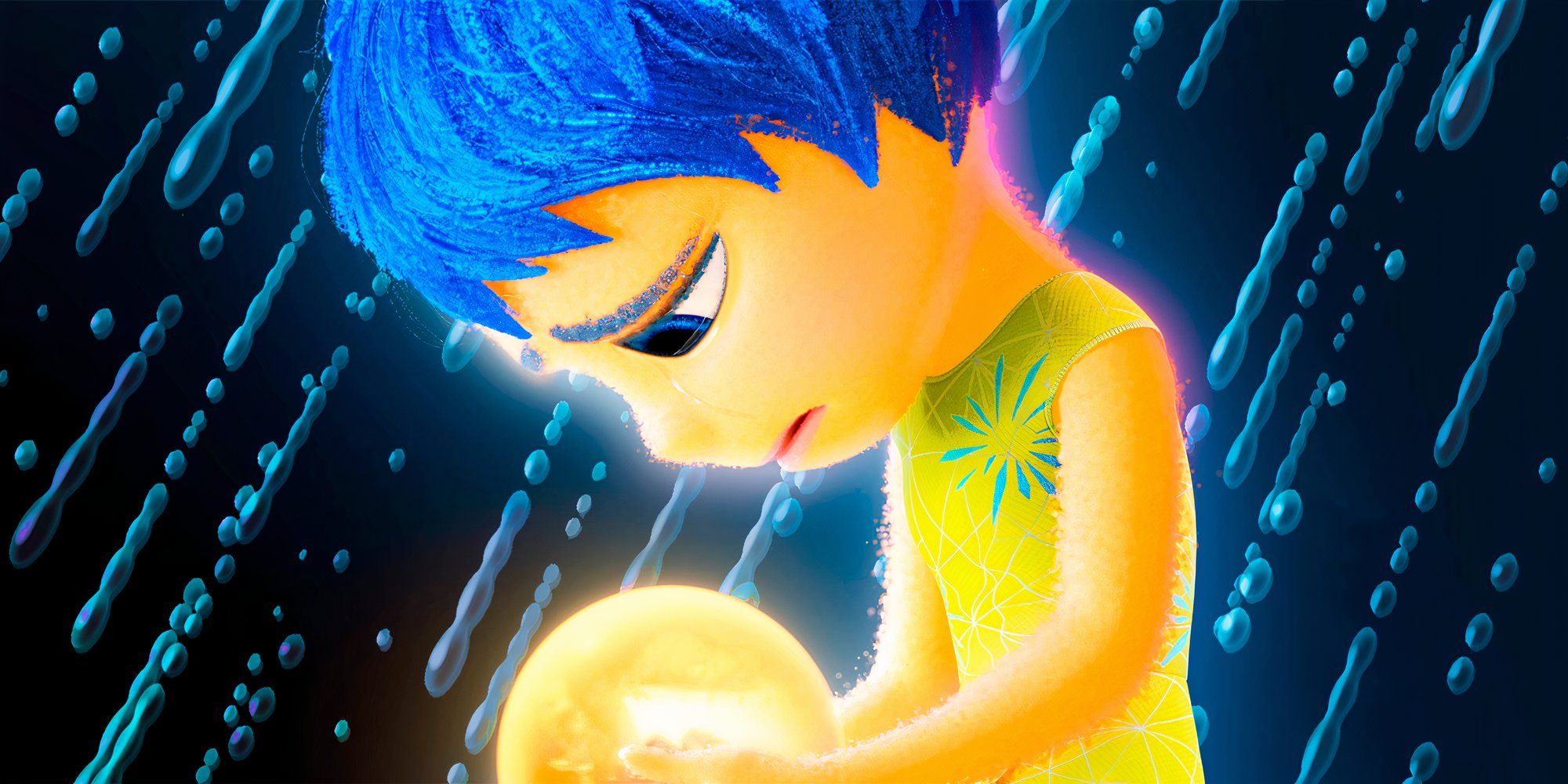How Joy Can Cry In The Inside Out Movies
Warning: Contains SPOILERS for Inside Out 2!
Despite Joy being the manifestation of joy, she is able to cry in Pixar's Inside Out movies, and here's why. In the world of Inside Out, each of the main characters that lives inside of Riley's mind is the manifestation of a specific emotion. In the first movie, Joy, Sadness, Anger, Fear, and Disgust make up the five emotions, with their names also being their defining character traits. While this continues with the addition of Anxiety, Envy, Ennui, Embarrassment, and Nostalgia in Inside Out 2, there is a twist on this Inside Out formula, with Joy being able to cry.
Although all of the emotions make up Riley, Joy is the protagonist of Inside Out's ensemble cast, with her character arc being key to the themes of both films. Despite being billed as a joyful ball of energy who sees the bright side of everything, Joy has some pretty sad moments in Inside Out and Inside Out 2. While Joy crying makes sense for her character at various points in her arc, some fans of Inside Out have begun to wonder how the rules of the emotions work, with the ability for Joy to feel sadness being one of the biggest head-scratchers.
Joy Can Cry In Inside Out Because She Has Her Own Emotions
Their Names Are Just What They Input In Riley's Mind
Close
Although Joy is meant to be the manifestation of every happy feeling that Riley could have, she also seems to have her own emotions. While neither of the Inside Out movies go inside Joy's head to show that she has her own anthropomorphic emotion characters, her actions clearly show that she is able to feel more than joy. Inside Out and Inside Out 2 sees Joy get angry at the other emotions, feel anxious about Riley's state, and feel sad about her role in Riley's development. These are just some of the many unhappy emotions that Joy has throughout the Inside Out movies.
The same can be said for the other emotions in Inside Out. There are times when Sadness is angry at Joy, Fear is joyful in Riley's state, Anger is sad about what is going on with Riley, and Disgust is fearful of something that could affect Riley's social life. All of the Inside Out emotion characters have a range of emotions that they can feel throughout the movies, showing how dynamic and complex these characters truly are.
Related Inside Out 2's 21 Easter Eggs & Pixar References Explained Inside Out 2, the long-awaited sequel to Pixar's beloved 2015 movie Inside Out, contains a number of Easter eggs and references to other Pixar movies.
Although the emotion characters feel different emotions, these different emotions are most often connected to their primary characteristics. So, when Joy is sad, she is typically sad about Riley not being happy. When Fear is joyful, it is typically because something scary has gone away. So on and so forth. So, the names of each member of Inside Out's cast do not dictate what their emotions are. Rather, their names are a label that shows what kind of stimuli they respond to and what kind of outcome they are looking to obtain for Riley.
Why Joy Cries In The Inside Out Movies
It Is Key To Her Character Arcs
Close
Joy crying in the first Inside Out is the moment where she makes the realization that completes her character arc. After falling into the pit with Bing Bong, Joy looks at the memories that have fallen with them. While looking back on Riley's childhood and who she used to be, she begins to feel sadness. She then cries while looking back on Riley's sad memories, with her emotion being a mixture of defeat and of despair at the fact that she isn't there to make Riley feel joy.
Related Where Riley's New Emotions Come From In Inside Out 2 Inside Out 2 introduced several new emotions for Riley to contend with that were not in the first movie, begging the question of where they came from.
However, things quickly change when Joy realizes how sadness actually helps Riley. While watching a memory of Riley sitting alone in a tree, Joy watches the memory become happy as Riley's parents and friends comfort her. This allows Joy to see that, in the sad times, the comfort and closeness that others bring can make us happy. The sad memories and how your loved ones react to it help you to realize how much those around you love you. This is something that Joy had never thought about before, with her tears showing that she finally understands that sadness isn't a bad emotion.
Joy Only Being Joyful Would Make Inside Out Boring
She Would Be A One-Dimensional Protagonist
Close
While Joy being sad is key to her Inside Out character arcs, the film also gives Joy multiple emotions in order to keep the film entertaining. If Joy could only feel joyful, then she wouldn't be much of a character, turning the story of Inside Out into an immensely boring one. The worst thing that a film can have is flat protagonists, and if Joy wasn't able to have any complex emotions, she would definitely be flat.
A character can not go through change if they can not feel regret or realize that they have been doing something wrong. Joy constantly being a bubble of positive energy with no deeper emotions would take away from that, with that completely wrecking what is good about the Inside Out movies.
Joy Crying Connects To Inside Out's Overall Ideas On Emotions
All The Emotions Are Intertwined
Close
Inside Out and Inside Out 2 are trying to say something about emotions, and Joy being able to feel sad connects to this overall idea. The central dramatic argument of Inside Out is that emotions aren't completely separate monoliths. Instead, all of the emotions are intertwined. Riley's core memories can be both joyful and sad, or any other combination of emotions. In Inside Out, the emotions are like primary colors, with the full spectrum of colors being unlocked when they begin to mix.
Related How Anxiety & The New Emotions Change Riley In Inside Out 2 Riley’s behavior is changed dramatically by the new emotions in Inside Out 2, but the film does a great job of working this into its central message.
Inside Out 2 pushes this theme even further by introducing an all-new cast of emotions. Anxiety, Envy, Ennui, and Embarrassment are all more specific versions of the characters from the first film, with this showing that Riley is gaining a more complex understanding of her emotions as she grows up. Joy's conflict with Anxiety in Inside Out 2 carries a similar message to Joy's conflict with Sadness in the original Inside Out, with this arc continuing to highlight how the best balance comes when all emotions are working together rather than pushing anyone out.











COMMENTS